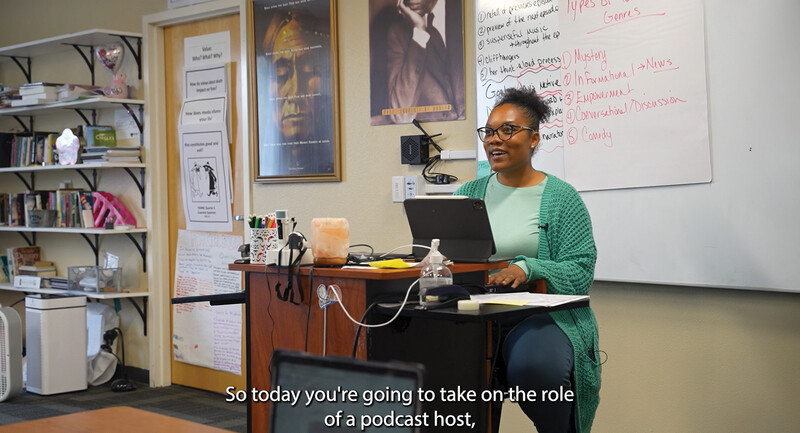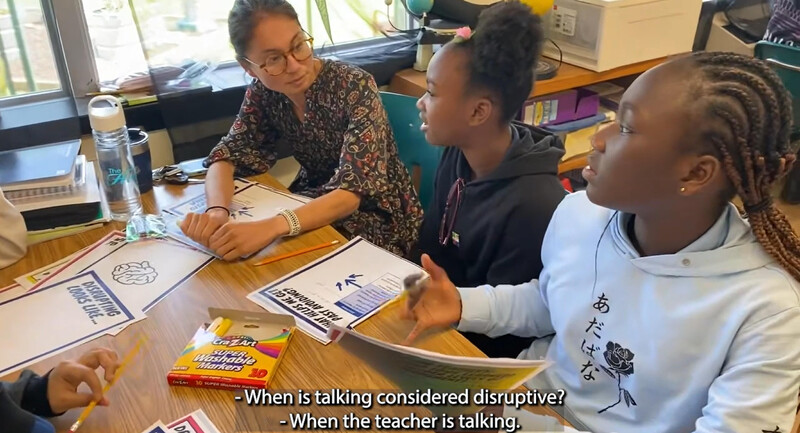This blog post is part of an ASCD partnership with Wonder Media. To see all blog posts from Wonder Media on the 16 Habits of Mind, you can click here.
Don’t forget to submit to the Habits of Mind Time Capsule! For submission form, click here.
Everyone my age probably lived through this riddle: “What is black and white and read all over?” Well, in the written word, it loses some of its punch since you can tell it is “read” instead of “red” which helps us with the answer, a newspaper. Or, how about the knock-knock joke; “Knock, knock.” “Who’s there?” “Who.” “Who who?” “What are you an owl?” Now, I can sense the eye rolls from readers but these were classics when I was in grade school back in the 60’s.
Any professional speaker worth their fee always scatters a fair amount of humor throughout their presentations. Night time talk show hosts demonstrate the appeal of humor as well; Colbert, Fallon, Kimmel, and Corden all come readily to mind. Let’s face it, we like to laugh; it’s a unifying human response.
When Art Costa and Bena Kallick assembled data about the 16 Habits of Mind they surveyed 1,000s of successful people and found that “Finding Humor” is a huge part of their success. Humor stimulates the brain to create those feel-good hormones, which in turn, assist us in remembering information. Integrating humor into instruction helps learning stick. Research shows that more areas of the brain light up on a functional MRI when using humor than other types of instruction or strategy. Learning is retained more thoroughly if an experience radiates through multiple regions of our brain.
One of the great things about humor is that it also relates to two of the other habits of mind, “Responding with Wonderment and Awe” and “Thinking Interdependently”. Most of the time we find our funny bones are attached to those around us as we find the same things to be humorous. We connect with one another collectively with our response to humor.
When I was teaching molecules to 7th grade science students I called the water molecule, good ol’ H2O, the “Mickey Mouse” molecule. I could draw the larger oxygen atom for his face and then stick an ear on the top right and left and create a reasonable outline of Mickey’s head, ooo. I could change my voice and do a pretty fair imitation of “Hi, I’m Mickey Mouse” as well; the learning stuck!
When teaching the concept of diffusion I had a bottle of industrial deodorant used for, according the label, “hog confinement, sewage disposal…..”, you get the gist. It wasn’t bad smelling, it was just very strong. When I read the list of suggested applications, I would add “masking the smell of 7th graders” to the list. I’d squirt a couple of shots into a corner of the room and have students raise their hands when they could smell the fragrance as the molecules moved from a higher concentration to a lower concentration. Lesson learned. Did I mention that the odor was strong?
In following lessons, for example, on the role of diffusion in the exchange of gases in our respiratory system, I’d ask why oxygen molecules would move out of the lungs and into the blood. If they got stuck, I’d just whip out that bottle of industrial deodorant and they’d all shout “diffusion”! If I was trying to prompt the answer “diffusion” out of a reluctant student, I’d say “don’t make me do this” as I’d reach into the cabinet for that mister bottle. They’d make the connection to “diffusion” as the answer right away.
Now, shortly after you hear someone begin a joke or a riddle, you judge whether you’ve heard it before so you begin “wondering” at the onset of the telling. It is a bit similar to the use of wait time in classroom discussion. As soon as the question is posed, the brain begins rummaging through the neurons searching for that answer. Even if you don’t know the answer, this process helps develop cognitive function. Our brains love to figure out a puzzling joke or riddle. When we hear the answer, particularly a good one, that cognitive dissonance in our brains (the difference between wanting to know and actually knowing) gives us a great feeling. Responding with wonderment and awe is probably that squirt of dopamine in our brains.
How about this one? “What has no beginning, has no end and has no middle?” I heard this one on the home improvement show “Property Brothers” the other day. Keep reading until the end for the answer! We’ll see if I remember to tell you.
Humor is not hard to find in classrooms. Unfortunately, humor often occurs at the expense of others. We need to be able to help our students figure out when and if humor is appropriate. As I was teaching a 6th grade Habits of Mind class, I would often ask students if they would laugh if one of their classmates dropped their lunch tray. Of course, most knew what the empathetic response was, but most were honest in saying that they would probably laugh, particularly if it were a classmate!
Humor has its place but can be over used or misused. Sarcasm, cruel or inappropriate humor, forced humor, too much humor and off-topic humor can damage a lesson and learning as well.
However, you can find many websites with resources about using humor in the classroom for learning; one website actually has jokes broken down by subject matter! No joke!
Mr. Watson was one of the favorite teachers in my building; he had lots of classic jokes he loved to spring on kids in his physical education classes. “What color was the Lone Ranger’s white horse?” This joke started to break down when students no longer knew whom the Lone Ranger actually was! Sometimes Mr. Watson would say he was “smiling like a one-eyed dog in a butcher shop.” I never did figure out why the dog had to have only one eye. He used humor to engage students in his class.
You may have seen the video where the teacher acts like a velociraptor when he’s calling his students in from recess. You may have seen other teachers using hilarious costumes, funny hats or shoes, doing funny dances or singing songs as they try to reach into the hearts of their students using humor to stimulate engagement. I even used to personalize some test questions using student names in the questions or as potential answers.
In the journey of learning, perhaps it is most important that we are able to laugh at ourselves. Living in Nebraska I had more than one occasion to draw the outline of the state on the board. Chalk, white and Smart were all mediums I used over my 37-year career, with many hoots and hollers from students asking what “that” was? Sometimes I’d invite them up if they thought they could do better, redraw the outline or simply go on with the lesson at hand.
I’ve had students recount lessons that I didn’t remember until they prompted me with the impact it had on their own learning. Often those stories included some humorous moment attached to that lesson. So, I’ll end with a classic:
“mecia” + “mecia” = paramecia (read as: pair of mecia)
Which, for those of you who have forgotten, is a protist: a single-celled organism!
“Finding Humor” is a phenomenon that challenges each of us as teachers to play with our own personality and background. Though it might not come naturally to all of us, the key is to remember that humor is a tool that makes learning easier for our kids!
And, no, I did not forget about that Property Brothers joke! What has no beginning, no end and no middle? A donut! A donut has no beginning, no end and no middle! I hope the cognitive dissonance didn’t get to you!
Bob Feurer spent 37 years teaching 7-12 science and coaching three sports at North Bend Central P.S. in North Bend, NE. He retired from the classroom and has been elected to the local school board. He considers himself as a blue color habits of mind practitioner as he is self-taught after reading Habits of Mind Across the Curriculum and Learning and Leading with Habits of Mind. He recently received his certification as a HOM professional developer. Feurer is a third-generation teacher and his daughter the fourth. He was the 2011 Nebraska Teacher of the Year.








